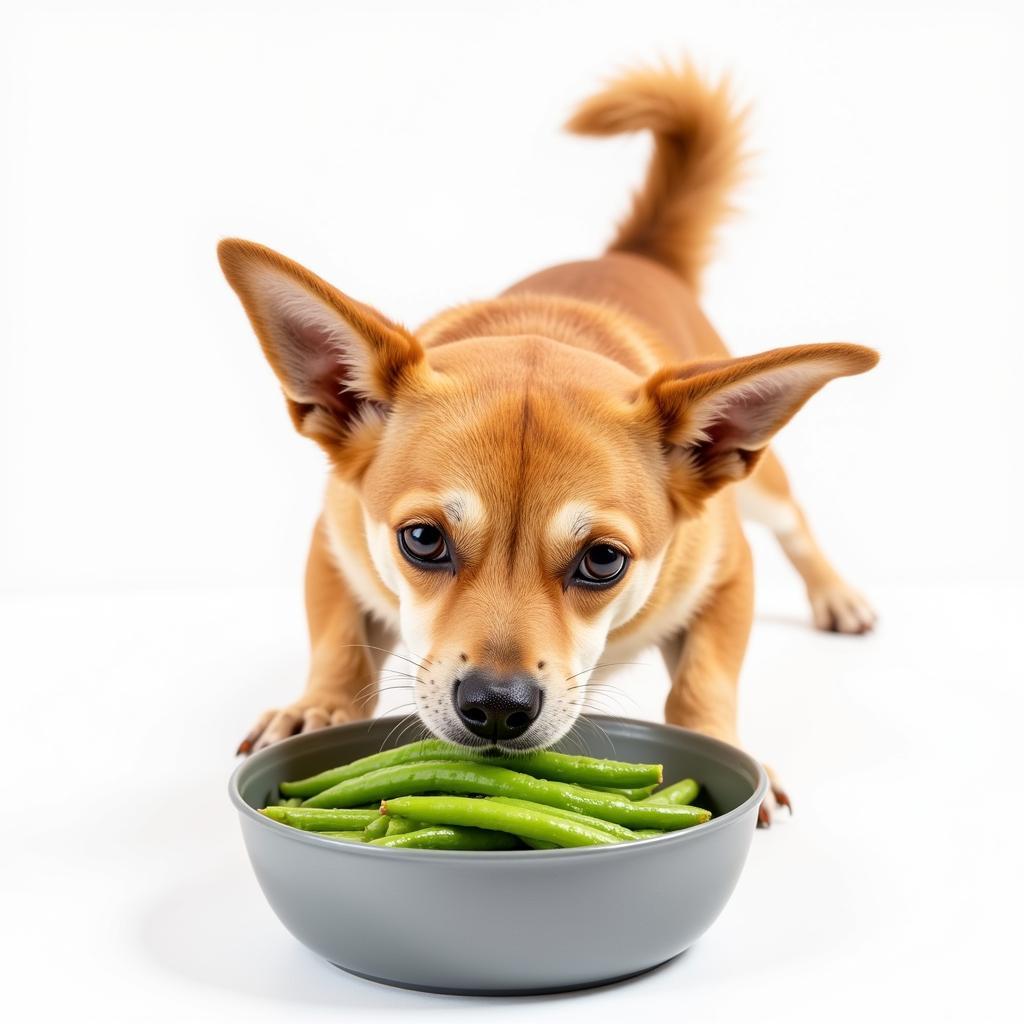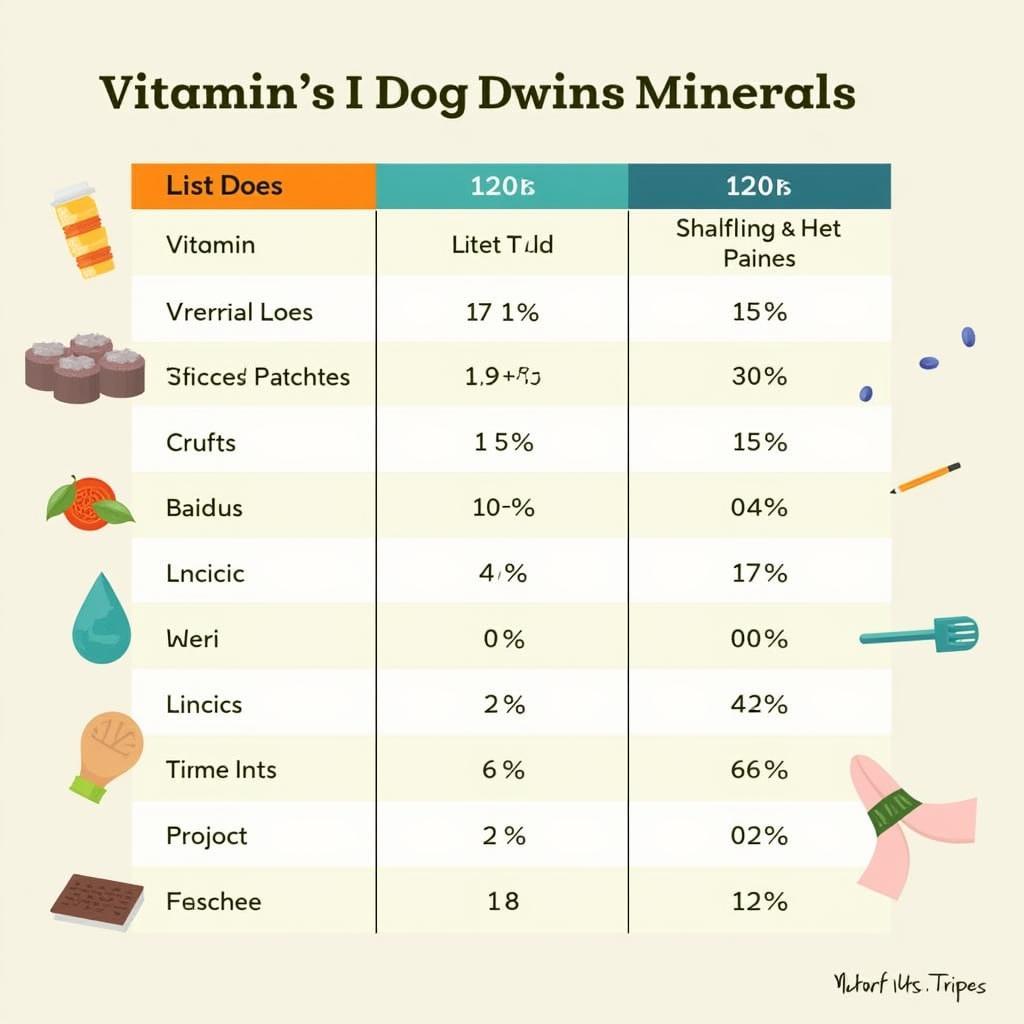Dog food tripe may not be the most glamorous topic, but for pet owners seeking to provide a natural and nutritious boost to their furry friend’s diet, it’s worth exploring. This comprehensive guide dives deep into the world of dog food tripe, covering its benefits, potential drawbacks, and everything in between.
What is Dog Food Tripe?
Tripe refers to the edible lining of a ruminant animal’s stomach, most commonly cows. While it might not sound appetizing to us, dogs have been known to go crazy for its strong aroma and unique flavor.
 Dog enjoying a bowl of tripe
Dog enjoying a bowl of tripe
For centuries, tripe has been a staple in many traditional dog diets. Rich in essential nutrients and easily digestible, it offers a range of health benefits that have piqued the interest of modern pet owners.
Nutritional Benefits of Tripe for Dogs
One of the main reasons dog owners are turning to tripe is its impressive nutritional profile. Packed with protein, healthy fats, and essential vitamins and minerals, tripe contributes to a balanced and complete diet for your canine companion.
Protein Powerhouse:
Tripe is a fantastic source of highly digestible protein, crucial for muscle growth, tissue repair, and overall energy levels.
Healthy Fats for Optimal Health:
The fat content in tripe comprises primarily of healthy fatty acids like omega-3 and omega-6, which are known to support skin and coat health, joint function, and cognitive function.
Vitamins and Minerals Galore:
Tripe is naturally rich in essential vitamins and minerals like Vitamin B12, Selenium, and Zinc. These nutrients play vital roles in boosting the immune system, promoting healthy digestion, and supporting thyroid function.
 Nutritional chart highlighting key nutrients found in dog food tripe
Nutritional chart highlighting key nutrients found in dog food tripe
Types of Dog Food Tripe
When it comes to incorporating tripe into your dog’s diet, you’ll encounter different types, each with its own set of characteristics:
- Green Tripe: This refers to unprocessed, raw tripe that hasn’t been cleaned or bleached. While it retains the most nutrients, it’s essential to source green tripe from reputable suppliers to minimize the risk of bacterial contamination.
- White Tripe: This type of tripe has been cleaned and bleached, resulting in a milder smell and appearance. While the processing might slightly reduce the nutrient content, white tripe remains a healthy and palatable option for dogs.
- Tripe-Based Dog Food: Many commercial dog food brands now offer formulas that feature tripe as a primary ingredient. This allows pet owners to enjoy the benefits of tripe without the hassle of preparing it themselves.
Is Dog Food Tripe Right for My Dog?
While tripe offers an array of health benefits, it might not be suitable for every dog.
Consider these factors:
- Digestive Sensitivity: Some dogs, particularly those with sensitive stomachs, might experience digestive upset when first introduced to tripe.
- Allergies and Intolerances: If your dog has known food allergies or intolerances, consult with your veterinarian before introducing tripe.
- Raw Feeding Considerations: If you choose to feed raw green tripe, ensure it comes from a trusted source and follow safe handling practices to minimize the risk of bacterial contamination.
Incorporating Tripe into Your Dog’s Diet
There are numerous ways to introduce tripe into your dog’s diet:
- As a Treat: Offer small amounts of tripe as a high-value reward during training sessions.
- Food Topper: Enhance the flavor and nutritional value of your dog’s regular meals by adding a spoonful or two of tripe on top.
- Complete Meal Replacement: Choose a commercially prepared, tripe-based dog food as a convenient and complete meal option.
 Different forms of tripe available for dogs including raw tripe, tripe treats, and tripe-based kibble
Different forms of tripe available for dogs including raw tripe, tripe treats, and tripe-based kibble
Conclusion
Dog food tripe offers a natural and nutrient-rich way to enhance your furry friend’s diet. By understanding its benefits, potential drawbacks, and various forms, you can make an informed decision about incorporating this unique ingredient into your dog’s meals.
FAQs
Can puppies eat tripe?
Yes, puppies can benefit from tripe’s nutrients. Introduce it gradually and in small amounts to avoid digestive upset.
How much tripe should I feed my dog?
The appropriate amount varies depending on your dog’s size, age, activity level, and overall dietary needs. Consult your veterinarian for personalized guidance.
Where can I buy high-quality tripe for my dog?
Reputable pet food stores and online retailers often carry various tripe products, including raw, frozen, and freeze-dried options.
Can I feed my dog tripe every day?
While tripe can be a healthy addition to a balanced diet, it’s best to feed it in moderation.
What should I do if my dog experiences digestive issues after eating tripe?
Discontinue feeding tripe and consult your veterinarian to rule out any potential allergies or sensitivities.
Need help choosing the right tripe option for your furry companion? Contact us at Phone Number: 02437655121, Email: minacones@gmail.com or visit our store at 3PGH+8R9, ĐT70A, thôn Trung, Bắc Từ Liêm, Hà Nội, Việt Nam. Our dedicated team is available 24/7 to assist you.